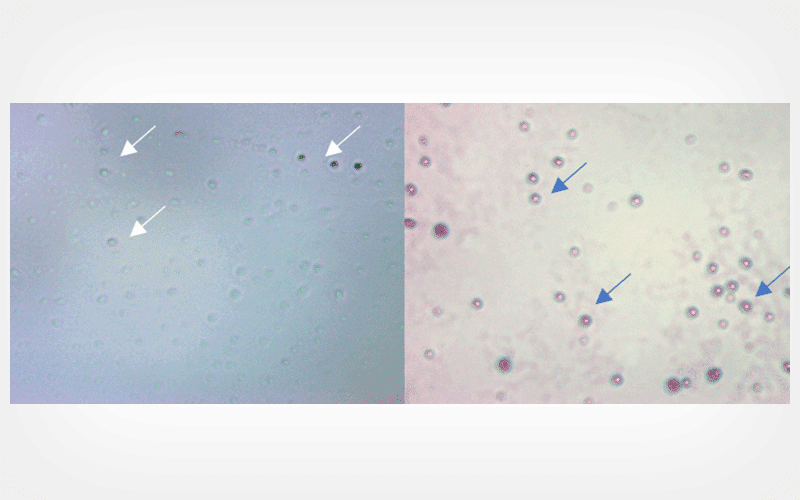CryoLetters Volume 45 - Issue 5
CryoLetters 45 (5), 269-278 (2024)
© CryoLetters, editor@cryoletters.org
doi.org/10.54680/fr24510110112
PERSPECTIVE: Cryosurgery process applications: a mathematical review
Lalhmingsangi Famhawite1*, Sonam Tanwar2 and Pooja Raj Verma3
- Department of Mathematics,
- Cluster Innovation Centre,
- Shaheed Bhagat Singh College,
University of Delhi, Delhi, India
*Corresponding author’s E-mail: lfamhawite@maths.du.ac.in
Abstract
The present study reviews some of the prominent mathematical models that are used to simulate the cryosurgery treatment of tumor tissues, i.e., destruction of tumor tissues via controlled freezing with cryoprobes with minimizing the impact on surrounding healthy tissues. Numerical simulation of the appropriate mathematical models that reflect practical situations may help the physicians to design a planning framework for the treatment, which includes total number of cryoprobes to be used, their placement design and the duration of optimal freezing, etc. Finite element method, meshfree method, and finite volume method are some of the suitable numerical techniques for simulating bio-heat transfer process within complex tissues during treatment.
Keywords: bioheat equation; double phase lag; necrosis analysis; numerical solution; phase transition; single phase lag; vascular network
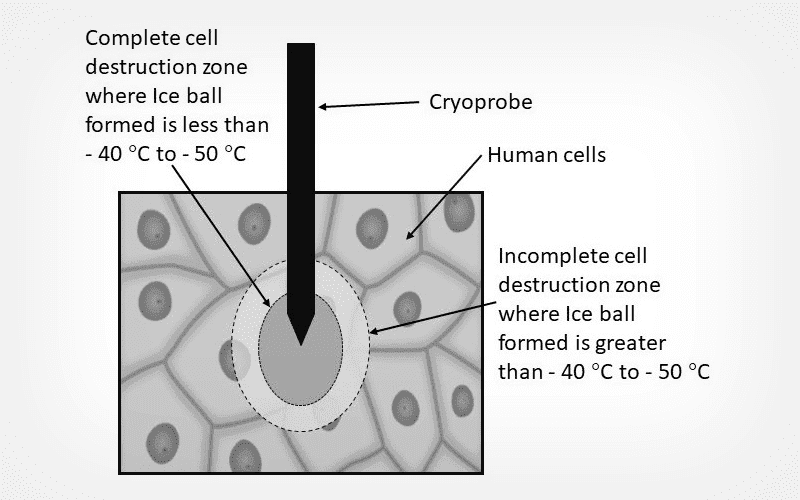
CryoLetters 45 (5), 279-287 (2024)
© CryoLetters, editor@cryoletters.org
doi.org/10.54680/fr24510110312
Comparative study of percutaneous and transbronchial lung parenchyma cryoablation using a porcine model
Chi Yang1,2 and Baolin Liu1*
- Institute of Biothermal Science and Technology, School of Health Science and Engineering, University of Shanghai for Science and Technology, Shanghai, China
- Department of Research and Development, AccuTarget MediPharma (Shanghai) Co., Ltd., Shanghai, China
*Corresponding author’s E-mail: blliuk@usst.edu.cn
Abstract
Background
Cryoablation is less invasive for certain selected and inoperable pulmonary lesions, which can be treated via percutaneous or transbronchial approaches.
Objective
To examine the effect of percutaneous cryoablation using an porcine lung parenchyma model.
Materials and methods
Nitrogen-cooled cryoprobe was inserted into the posterior lobe of the peripheral lung parenchyma of six healthy female pigs percutaneously under CT guidance. Double and triple freeze-thaw cycles were performed on the left lung and the right lung, respectively. CT images were obtained before, during and after cryoablation. Blood samples were collected at various time points for testing. Tissue samples from the ablation zone were obtained after cryoablation for histopathological analysis. Data from the percutaneous study were compared with previously published transbronchial cryoablation data.
Results
The cryoablation outcomes and inflammatory responses observed in the percutaneous group were largely consistent as compared to those previously published in the transbronchial groups. Similar trends in the histopathological transition from the center to the periphery of the ablation zone and tissue repair process was exhibited between two groups within 4 weeks. Two cases of pneumothorax occurred in the percutaneous group.
Conclusion
Cryoablation of the peripheral lung parenchyma by both percutaneous and transbronchial methods is safe and effective. Transbronchial approach demonstrates a lower complication rate than the percutaneous method. Two approaches complement one another for minimally invasive treatment of lung cancers.
Keywords: percutaneous cryoablation, porcine model, transbronchial cryoablation
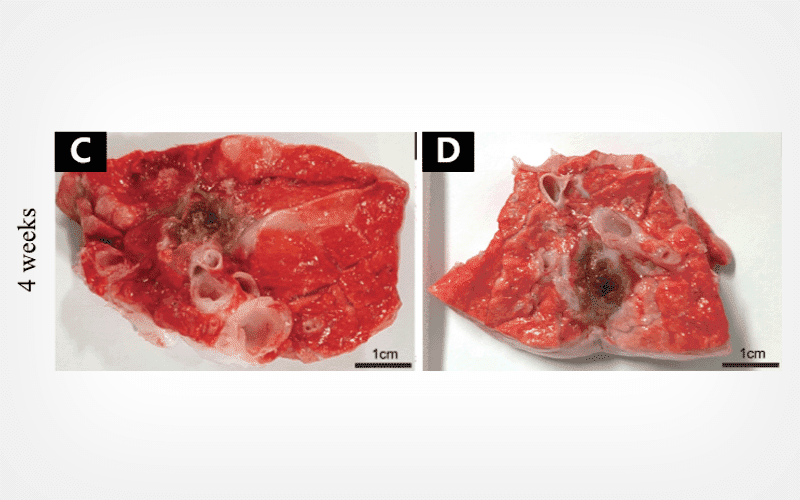
CryoLetters 45 (5), 288-293 (2024)
© CryoLetters, editor@cryoletters.org
doi.org/10.54680/fr24510110512
Effect of different concentrations of inulin on ram sperm quality during cryopreservation
Zahra Rahimi, Hadi Hajarian*, Hamed Karamishabankareh and Leila Soltani
- Department of Animal Science, Faculty of Agricultural and Engineering Science, Razi University, Kermanshah, Iran
*Corresponding author’s E-mail: h.hajarian@razi.ac.ir
Abstract
Background
In reproductive biotechnology, sperm cryopreservation has a vital role to play. Cryopreservation of sperm produces reactive oxygen species (ROS), which disrupt sperm function and structural competence. Numerous protective chemicals, including fructans, have been used during sperm cryopreservation.
Objective
To evaluate the effect of different concentrations of the fructosan inulin on ram sperm quality parameters, superoxide dismutase (SOD) activity, and malondialdehyde (MDA) production after freezing and thawing.
Materials and methods
The pooled samples from four healthy rams were divided into seven equal aliquots and diluted in a Tris-base extender supplemented with 1, 2, 4, 8, 16, and 28 mM of inulin or without inulin supplementation (control). By using liquid nitrogen vapor, the semen was frozen and stored at 196°C.
Results
The total motility, viability, and DNA integrity were significantly improved after freeze-thawing with 28 mM inulin, compared to other treatment groups (P<0.05). A Tris-based extender containing 16 and 28 mM of inulin displayed the highest levels of ram sperm membrane integrity when compared with the control (p<0.05). The abnormality of ram sperm was increased during freeze-thawing at control and 1 mM of inulin, compared to 16 and 28 mM of inulin (P<0.05). Additionally, 28 mM of inulin decreased MDA and increased SOD activity in ram sperm in comparison with the other treatments (P<0.05).
Conclusion
As a result, 28 mM of inulin could be beneficial for the cryopreservation industry and reduce the harmful effects of freeze-thawing on ram sperm.
Keywords: cryopreservation; inulin; ram; sperm

CryoLetters 45 (5), 294-300 (2024)
© CryoLetters, editor@cryoletters.org
doi.org/10.54680/fr24510110712
In vitro dissolution of encapsulated or dispersed vitamin E and cholesterol is correlated with preservation of refrigerated ovine sperm
Lamia TAOUZINET1,2*, Sofiane FATMI2,3,4, Allaeddine KHELLOUF2, Amine BENBERKANE2, Amina KRIBECHE5, Zahra TOUTOU3,6, Mohamed SKIBA4 and Mokrane IGUER-OUADA2
- Centre de Recherche en Technologies Agroalimentaires, Route de Targa Ouzemmour, Campus Universitaire, Bejaia 06000, Algeria
- Associated Laboratory in Marine Ecosystems and Aquaculture, Faculty of Nature and Life Sciences, Université de Bejaia, Bejaia 06000, Algeria
- Technology Pharmaceutical Laboratory, Department of Processes Engineering, Faculty of Technology, Université de Bejaia, Bejaia 06000, Algeria
- UNIROUEN, DC2N INSERM U1239-Galenic Pharmaceutical Team, UFR of Health, Normandy University, 22 Bd Gambetta, Rouen, France
- Laboratoire de Biomathématique, Biochimie, Biophysique Et Scientométrie, Faculté des Sciences de la Nature Et de la Vie, Université de Bejaia, Bejaia 06000, Algeria.
- LMPA, Department of Process Engineering, Faculty of Technology, Université de Bejaia, Bejaia 06000, Algeria
*Corresponding author’s E-mail: lamia.taouzinet@crtaa.univ-bejaia.dz
Abstract
Background
Vitamin E (α-tocopherol) and cholesterol are crucial components in cellular protection and physiological processes. Their uses in biological media face challenges due to their poor solubility and stability.
Objective
The study investigated the complex interactions of these bioactive compounds in various encapsulation systems of cyclodextrin and liposome, as well as dispersion in PEG-6000, in an attempt to improve the viability, motility, and preservation of ovine sperm cells.
Materials and methods
The work explored the in vitro dissolution kinetics of vitamin E (α-tocopherol) and cholesterol using semi-empirical models.
Results
The release profiles of VitE and Chl varied considerably, depending on the specific carrier systems. For liposome-loaded VitE and Chl, the Korsmeyer-Peppas model gave the best fit; for CD/VitE and CD/Chl, the Higuchi model provided the best fit, whereas for PEG-6000 dispersions (VitE and Chl) both the Higuchi and Korsmeyer-Peppas models demonstrated the excellent fit. All systems indicated a Fickian diffusion mechanism dictated by the concentration gradient. The delivery of VitE and Chl with CD, liposome and PEG dispersion significantly increased sperm mobility and motility. The effect on the VCL parameter was the greatest by liposome-loaded VitE and Chl, followed by CD encapsulation and PEG-6000 dispersion.
Conclusion
The dynamics of vitamin E and cholesterol within innovative delivery systems offers valuable insights into the development of advanced solutions in reproductive health, particularly on improving the viability, motility of refrigerated ovine sperm cells.
Keywords: cholesterol; cyclodextrin; liposome; ovine; PEG-6000; sperm preservation; vitamin E

CryoLetters 45 (5), 301-308 (2024)
© CryoLetters, editor@cryoletters.org
doi.org/10.54680/fr24510110212
Effects of vitrification on mitochondrial ultrastructure and membrane potential and its distribution in mouse oocytes
Chaofan Zhang1,2, Mingpeng Zhao1, Yuhuan Xue1,2, Xiaochuan Tang2, Deshun Shi2 and Xiaoli Wang2*
- Department of Reproductive Medicine, Guangdong Provincial People's Hospital (Guangdong Academy of Medical Sciences), Southern Medical University, Guangzhou 510080, China
- College of Animal Science and Technology, Guangxi University, Nanning 530005 China
*Corresponding author’s E-mail: 416714299@qq.com
Abstract
Background
Vitrification is commonly used for in vitro fertilization and has significant impact on gametes.
Objective
To investigate changes in ultrastructure, membrane potential (ΔΨm) and distribution of mitochondria in mouse oocytes after vitrification.
Materials and methods
Mouse oocytes were divided into three groups: one group as fresh control, one group for the toxicity test (treated with cryoprotectant but without vitrification), and the other for vitrification.
Results
Most mitochondria in oocytes were damaged after cooling and warming, being rough and fuzzy in appearance, even swollen and broken. The ΔΨm of the toxicity test group and the vitrification group was 0.320±0.030 and 0.244±0.038, respectively, in comparison to the fresh group (0.398±0.043). The ΔΨm of the vitrified oocytes was significantly lower than fresh oocytes and the toxicity test oocytes (P<0.05), but there was no significant difference between fresh oocytes and the toxicity test oocytes (P>0.05). Mitochondria in fresh oocytes were denser and strained stronger, with 59.5% distributed homogeneously and 36.4% polarized. The majority of mitochondria in the toxicity-tested oocytes were clustered (69.3%) and only a small portion were distributed homogeneously (19.6%), while mitochondria in vitrified oocytes were clustered (56.3%) and deficient (24.4%), and their fluorescent staining was weak and blurred. There was a significant disruption in mitochondrial function after vitrification.
Conclusion
Vitrification alters the ultrastructure, membrane potential and distribution of mitochondria in oocytes, most likely caused by toxicity and mechanical injury.
Keywords: cryopreservation; mitochondria; mouse oocyte; vitrification
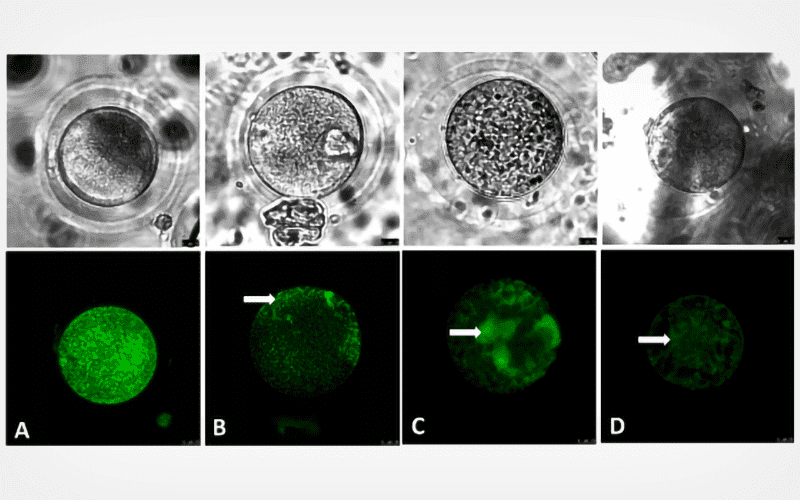
CryoLetters 45 (5), 309-319 (2024)
© CryoLetters, editor@cryoletters.org
doi.org/10.54680/fr24510110412
Immunofluorescence and biochemical investigation of the protective effects of naringin and diosmin on the freezability of Merino ram semen
Ali Doğan Ömür1, Özgür Kaynar2, Mustafa İleritürk3, Mustafa Özkaraca4, Ali Erdem Öztürk5, Mustafa Bodu6, İpek Nur Şahin7 and Serkan Ali Akarsu1*
- Department of Reproduction and Artificial Insemination, Fac. Veterinary Medicine, Ataturk Univ., Erzurum, Turkey
- Department of Biochemistry, Fac. Veterinary Medicine, Kastamonu Univ., Kastamonu, Turkey
- Horasan Vocational School, Ataturk Univ., Erzurum, Turkey
- Department of Pathology, Fac. Veterinary Medicine, Cumhuriyet Univ., Sivas, Turkey
- Department of Reproduction and Artificial Insemination, Fac. Veterinary Medicine, Erciyes Univ., Kayseri, Turkey
- Department of Reproduction and Artificial Insemination, Fac. Veterinary Medicine, Selcuk Univ., Konya, Turkey
- Animal Health and Aquaculture Department, Agriculture Provincial Directorate of Forestry, Muş, Turkey
*Corresponding author’s E-mail: serkan.akarsu@atauni.edu.tr
Abstract
Background
Various antioxidant substances are added to sperm extenders to protect spermatozoa against oxidative stress and cryodamage.
Objective
To investigate the effects of the flavonoid diosmin (DIO) and a flavanone glycoside naringin (NAR) on the freezability of ram semen.
Materials and methods
In this study, six Merino rams were used during the breeding season. The ejaculates were pooled after collection from the rams. Pooled ejaculates were divided into six groups: control, NAR 1 mM, NAR 2 mM, NAR 4 mM, DIO 2 mM, and DIO 4 mM, and then diluted with a TRIS-based diluent. The pooled semen was equilibrated, placed in 0.25 mL pipettes with 10 × 107 sperm cells in each pipette, and frozen in liquid nitrogen vapor. After 24 h, the pipettes were thawed at 37°C for 25 s and analyzed in terms of spermatological parameters.
Results
The highest plasma membrane integrity ratio was found in the DIO 4 mM group, whereas a statistically significant difference was found between the NAR 1 mM and NAR 2 mM groups (p<0.05). While the DIO 4 mM group had the highest acrosome integrity rate, a statistically significant difference was found between the other groups (p<0.05). Mitochondrial activity was the highest in the NAR 4 mM, DIO 4 mM and DIO 2 mM groups (p<0.05). In the analysis of the sperm membrane lipid profile, it was observed that the DIO group had the highest lipid-phospholipid ratio. In sperm membrane protein profile analysis, it was found that both additives exerted protective effects at different levels. The highest total protein content was seen in the DIO 4 mM and NAR 4 mM groups. 8-hydroxydeoxyguanosine (8-OhDG) positivity was more common in the control group than in the DIO and NAR groups. Cu-Zn superoxide dismutase (SOD) expression was lower in the control group and more intense in all other groups. Positive results were especially observed in the acrosome of the sperm cells.
Conclusion
The addition of NAR and DIO to the ram semen extender increased the quality of sperm parameters after the freeze-thaw process.
Keywords: cryopreservation; diosmin; lipid / protein profile analysis; naringin; sperm
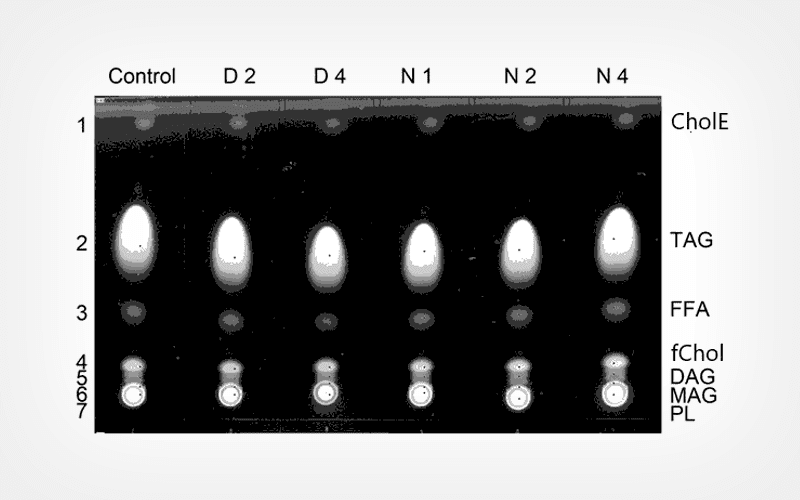
CryoLetters 45 (5), 320-328 (2024)
© CryoLetters, editor@cryoletters.org
doi.org/10.54680/fr24510110612
Effect of cryoprotectant and concentration on the sperm quality of walking catfish, Clarias batrachus, post-cryopreservation
Luvi S Handayani1, Siti Maulida1, Sri R Rahayu1, Nanda M Razi1, Mehmet Kocabas2, Filiz K Kocabas3, Martin Wilkes4, Mohd N. Siti-Azizah5, Kartini Eriani6, Nur Fadli7 and Zainal A Muchlisin7*
- Graduate School of Mathematics and Applied Sciences, Universitas Syiah Kuala, Banda Aceh 23111, Indonesia
- Department of Wildlife Ecology and Management, Karadeniz Technical University, Turkey
- Faculty of Fisheries, Munzur University, Turkey
- University of Essex, Colchester, United Kingdom
- Center for Marine Biotechnology and Climate Adaptation, Universiti Malaysia Teranngani, Kuala Terengganu, Malaysia
- Department of Biology, Faculty of Mathematics and Natural Sciences, Universitas Syiah Kuala, Banda Aceh 23111, Indonesia
- Department of Aquaculture, Faculty of Marine and Fisheries, Universitas Syiah Kuala, Banda Aceh 23111, Indonesia
*Corresponding author’s E-mail: muchlisinza@usk.ac.id
Abstract
Background
Walking catfish, Clarias batrachus is one of the native and most popular freshwater catfish species in Indonesia. However, cultivation faces challenges, particularly due to the scarcity of larvae resulting from underdeveloped breeding technologies. Cryopreservation is a method of storing sperm to maintain viability for a long period and support the breeding technology of the fish. Cryoprotectant, in this context, plays an important role in determining the success of sperm cryopreservation.
Objective
To determine the best type and concentration of cryoprotectant for cryopreservation of walking catfish sperm.
Materials and methods
A total of five different types of cryoprotectants, namely DMSO, glycerol, ethyl glycol, ethanol, and methanol, were tested at four concentration levels namely 0%, 5%, 10%, 15%, and 20%, each with four replications.
Results
The type and concentration of cryoprotectant had a significant effect on sperm motility and viability (P<0.05). The best outcomes were obtained with 5% DMSO and ethyl glycol, 10% glycerol and methanol, as well as 15% ethanol.
Conclusion
The highest motility and viability values were obtained with 5% DMSO, resulting in its recommendation for cryopreservation of walking catfish sperm.
Keywords: cryoprotectant; DNA integrity; DMSO; sperm cryopreservation
